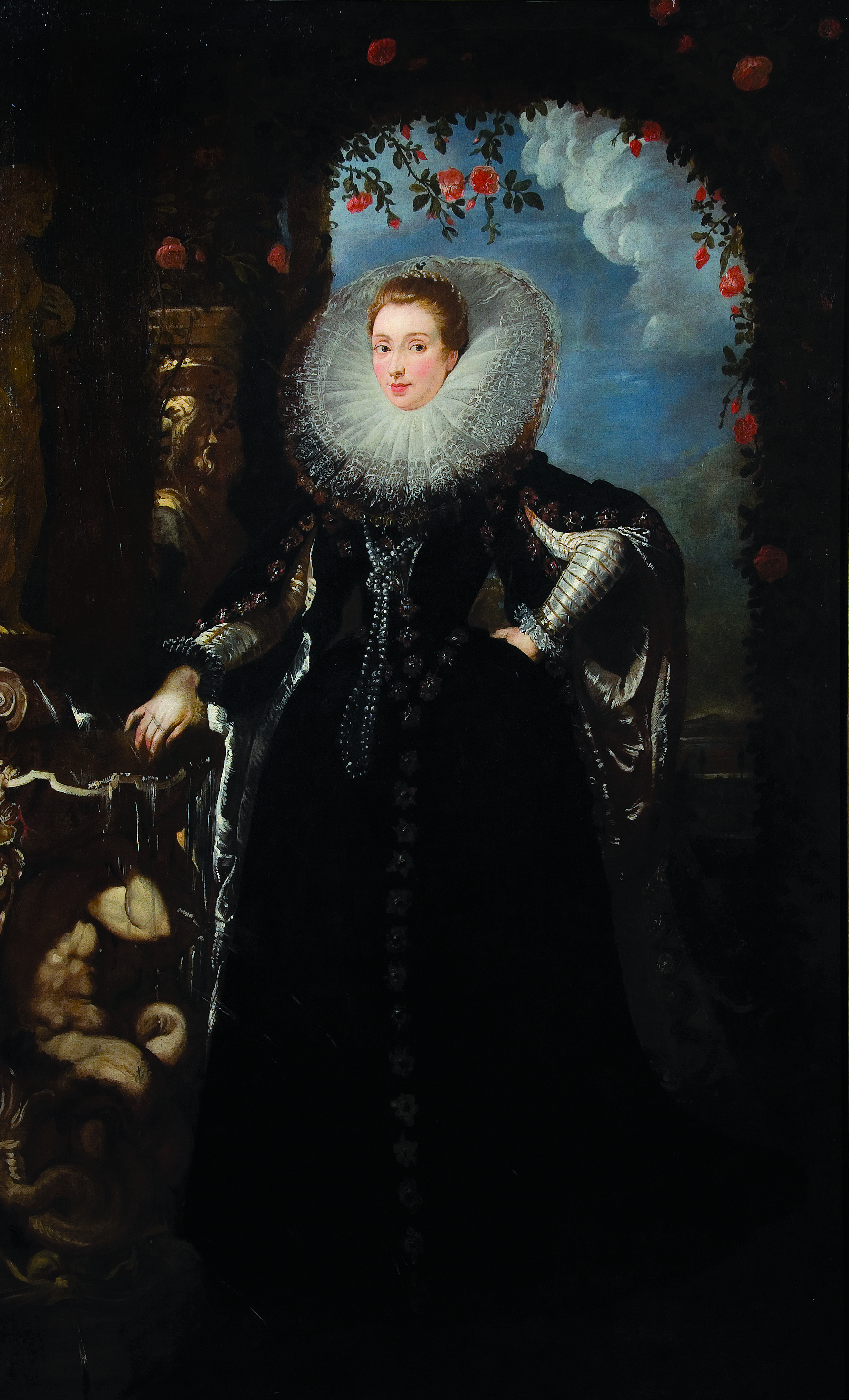Rubens painted the Portrait of Giovanna Spinola Pavese in 1606, during his stay in Genoa. He had been sent there on a mission to portray local aristorcracy by the Duke of Mantua. At the time Genoese aristocrats acted as a consortium of bankers for Spanish monarchs. Portraits were to be used to open the doors of some of the most important people of the day for the Duke of Mantua.
The full-length portrait shows Giovanna Spinola Pavese standing in royal pose, her left hand on the hip implying authority and allowing us to notice the legth of her sleeve and the glittering grey satin silk of its lining. The black dress, the tight bodice and high, pleated collar betray the strong influence of Spanish court fashion. It is not by chance that Giovanna is placed under a triumphal arch covered by climbing roses, her right hand delicately touching the water that springs from a fountain to her right. Such elements are highly indicative of the preference shown by Genoese aristocracy for gardens as a space of ‘natural’ behaviour.



